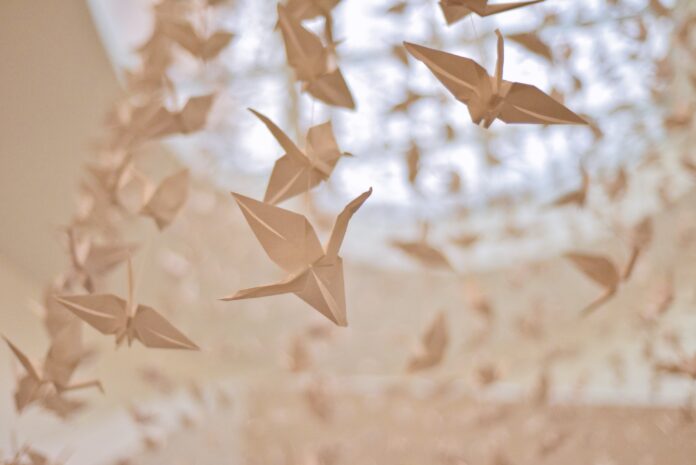Origami is the traditional Japanese art of paper folding that has been around for over 1,000 years. The word Origami comes from the Japanese words “ori” meaning to fold and “kami” meaning paper. In Origami, paper is folded into intricate and elegant designs without using scissors or glue. The art of Origami has been an essential part of Japanese culture for centuries and has gained popularity worldwide. Origami has evolved over time from simple paper cranes to complex and intricate models.
In this article, We will explore different aspects of the art of origami. From the material used, some basic folds, to the possible health benefits of practicing it.
Materials Used for Origami
The most commonly used paper for Origami is Washi paper, which is made from plant fibers. It is a lightweight paper that is strong and durable, making it ideal for folding intricate designs. Origami enthusiasts can also use other papers such as tissue paper, wrapping paper, and even dollar bills. However, using these papers does not necessarily guarantee the same quality finished products. The tools required for Origami include a bone folder, a ruler, and a cutting mat. These tools are essential in making precise folds and creases in the paper. While some people believe art is in its purest form when done using plain color papers. Decorators can add a personal touch to their models by incorporating materials such as markers and stickers in their designs. These materials can help to enhance the appearance of the model and create a unique and personalized finished product.
Basic Origami Folds
There are six basic Origami folds – the mountain fold, the valley fold, the squash fold, the petal fold, the reverse fold, and the pleat fold. These folds form the basis of all Origami models. The mountain fold creates a raised fold, while the valley fold creates a depression in the paper. The squash fold is used to compress a piece of paper. And the petal fold is used to create flower petals. The reverse fold is used to create a new fold in the paper. And the pleat fold is used to make multiple folds in the paper. Combining all the above folds allows the practitioners of origami to create very intricate and beautiful models. While the basics are important there are many intermediate and advanced techniques too, that you can explore. Once you have mastered the basic folds.
Creating Origami Models
To create Origami models, the first step is to choose the paper and the model you want to create. Then, follow the instructions carefully and fold the paper precisely. Origami models can range from simple to complex designs. And as your skills improve, you can move on to more advanced techniques like modular Origami, tessellation, and Kirigami. Modular Origami involves folding multiple units of the same shape and connecting them to create a larger model. Tessellation involves creating a pattern by repeating a geometric shape. Kirigami is a combination of Origami and paper cutting.
Health Benefits of Origami
Origami has numerous health benefits, both psychological and physical. Origami can help improve focus, concentration, and hand-eye coordination. It can also help reduce stress and anxiety by promoting mindfulness and relaxation. For people undergoing recovery from some kind of physical injury, Origami can have almost a therapeutic effect. Studies have shown that Origami can be an effective tool in improving cognitive and motor skills in children and adults. Practicing Origami also has a very positive impact on the way you age.
Conclusion
In conclusion, Origami is a beautiful and intricate art form that has been an essential part of Japanese culture for centuries. It is a fantastic way to promote creativity, improve mental and physical health, and connect with others. For beginners, it’s essential to start with simple designs and practice basic Origami folds. With practice and patience, anyone can master the art of Origami and create beautiful and intricate designs. The future of Origami is bright, and we can expect to see this ancient art form continue to inspire and delight people all over the world. So, pick up a piece of paper and start folding!
And as always folks read more similar informative and interesting articles on a wide range of topics on the Global Growth Forum. And Mojo Patrakar if you are interested in reading articles in Hindi.








